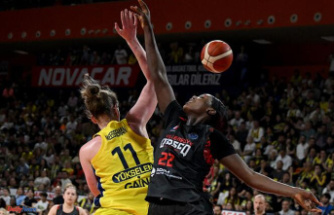By the time Honda unveiled its first cruiser motorcycle, it had already recorded remarkable success in road and off-road racing. At the time, the manufacturer had even succeeded in pushing many American buyers away from compact cars to small motorcycles. However, grabbing a piece of the American bike market was never easy — sports and compact bikes were never going to pull Harley-Davidson buyers toward Honda. Still, the Japanese manufacturer made it look effortless with the Shadow.
Indeed, Honda’s flagship VT1100 Shadow took the industry by storm. The Japanese cruiser produced more power than any equivalent Harley-Davidson, but crucially, it was more reliable. And with a VT1100 service manual to rely on, the Shadow is very cheap to run, with low maintenance and repair costs.
Honda Cruiser Bikes — Where it All Started
Honda's initial efforts to steal some of Harley-Davidson's customers didn't go so well, mainly due to US motorcycle import regulations. Specifically, the law banned importing motorcycles with over 701ccm of displacement. Naturally, that was a massive problem if you wanted to compete against American cruisers, boasting engines twice that size.
So, the first American Honda cruiser bike came out in 1983, under the VT700C nameplate, with a downsized 700 V2 engine, accompanied by the smaller VT500C. Luckily for Honda, the ban was lifted in 1985, and the company hurried to introduce the Shadow VT750, with the flagship VT1100 introduced soon after.
Beating the Americans With Technology
The VT1100 wasn't much different from its smaller cousins apart from a bigger engine and a five-speed gearbox. The Shadow was easily distinguishable from domestic cruisers, although it had a wide gas tank and occasional chrome bits and pieces. The main difference were its alloy wheels, tall riding position, and controls that didn't sit in front of the engine.
Also, the engine wasn't so deeply rooted in tradition as most American brands. That allowed Honda to add more modern technologies like electronic ignition and, more importantly, water cooling. Moreover, Honda used its racing know-how when it designed the VT1100, extracting 50% more power than an equivalent Harley-Davidson with a 1340ccm engine! It was an early sign of things to come from the Japanese motorcycle industry, which dominates the world today.
So, from the beginning, the fundamental ingredients looked more than decent. The only thing left was to give the Shadow a little more style and bling, which Honda covered with several different variants like the Phantom, Ace, Aero, and Sabre. And virtually all those variants would remain in production until Honda discontinued the VT1100 in 2007.
Honda continued the Shadow line with the even more powerful VTX1300 and VTX1800 models, though today, you can only have it with a smaller 745ccm V-Twin.
Honda VT1100 Engine Design and Technology
The VT1100 engine had a production run of 22 years, and in those two decades, there were almost no changes. The engine was always a 1100ccm V2 with a single overhead camshaft. With such a layout, it's evident that the point was to mimic American cruisers as much as possible.
However, the VT1100 also had three valves and two spark plugs per cylinder, plus hydraulic actuated valves. The drivetrain wasn't that conventional either, as Honda didn't go with a chain or a belt drive but a driveshaft instead, an intelligent decision since driveshafts require almost no maintenance.
Bringing American V-Twin Goodness to the VT1100
The first two model years made 78HP from its 1.1L, compared to the 54HP Harley-Davidson made at the time from its 1.3L. But American cruiser riders also wanted the experience of a classic V-Twin, namely the idle rumble and thumping sound. Hence, Honda introduced single-pin crankshaft models later, producing 62 HP, and then even 54 HP.
The single-pin crankshaft was the VT1100’s only major revision, and you could only have it in specific models, including the ACE (American Classic Edition), Sabre, and Aero. The single-pin crank VT1100C2 came around in 1995 in the first Shadow ACE edition, which also sported wire wheels, vintage color schemes, and a 2-1 exhaust.
A More Sporty Shadow Aero Model Hits the Market
The other rendition of this engine was the VT1100C3 which we first saw in the 1998 Shadow Aero. Even though the two engines were virtually identical, the VT1100C3 produced 5HP more, thanks to an upgraded exhaust. The Shadow Aero also had a lower ratio final gear, which improved acceleration but made for louder cruising. It was also lower to the ground, had a more streamlined design, and came with the wire wheels from the ACE.
On the other hand, double-pin crank models VT1100C and VT1100T always made 62HP after 1987. However, the Shadow Tourer and Sabre got lower first gears to help them off the line since they were designed with two passengers and luggage in mind.
Other than that, the Shadow VT1100 remained unchanged over its lifespan. The engine exceeded all expectations when it first came out, and I guess there was no need to change something that was doing its job perfectly.
Excellent Reliability; Low Maintenance and Repair Costs
The VT1100 Shadow is one of the lowest maintenance motorcycles you can buy, regardless of the generation. These bikes regularly go past 50,000 miles with no issues, and you can even find examples with over 100,000 miles. They are also straightforward to work on, especially with a VT1100 service manual (not so sure where to find one for your bike? Have a look at eManualOnline — you can thank me later!).
The fuel economy isn't that bad either, with early models getting over 35MPG and later ones getting up to 45MPG. While that fuel mileage is nothing revolutionary, it's right around the industry average.
Solid Performance and Good Comfort
At 107 mph (172 km/h), the top speed isn’t impressive either, but the 0-60 time is, with some versions, hitting that speed in as little as 5.3 seconds.
But performance is secondary to the comfort a Shadow VT1100 can provide. That's partially due to its long wheelbase and unconventionally shaped handlebars. The hand position might seem weird initially, but you will notice that it resembles holding a big steering wheel.
If you are not after excitement and adrenaline but want a comfortable and elegant-looking cruiser, then look no further. A Shadow VT1100 still has enough power to keep you awake while retaining comfort and remaining one of the most reliable motorcycles ever made.
Last Words
Ultimately, the VT1100 will go down in history books as one of the best cruisers ever made, especially among Honda bikes. With endless variations, styles, riding positions, and two engines, there is a Shadow VT1100 for anyone. And although the VT1100 might be a little heavy, its calm nature and easy maintenance make it a perfect beginner bike.
For those reasons, many riders still trust their VT1100 Shadows on long trips. It’s a bike that you can easily work on with a digital Honda Shadow VT1100 manual at hand, even when stranded in the middle of nowhere. That way, you’ll always reach your destination!
Hence, in my eyes, the Shadow VT1100 is the only cruiser you’d ever need, especially if you are on a budget, as it’s cheap to buy, run, and maintain!
Date Of Update: 08 November 2022, 10:37











